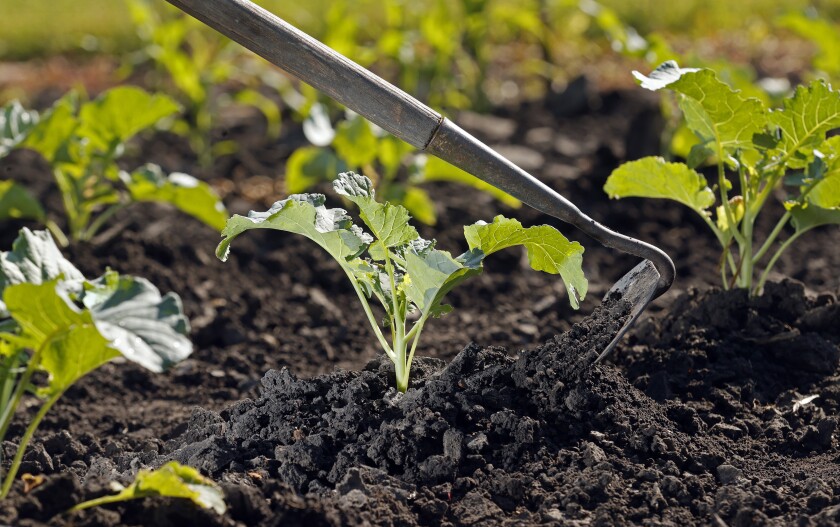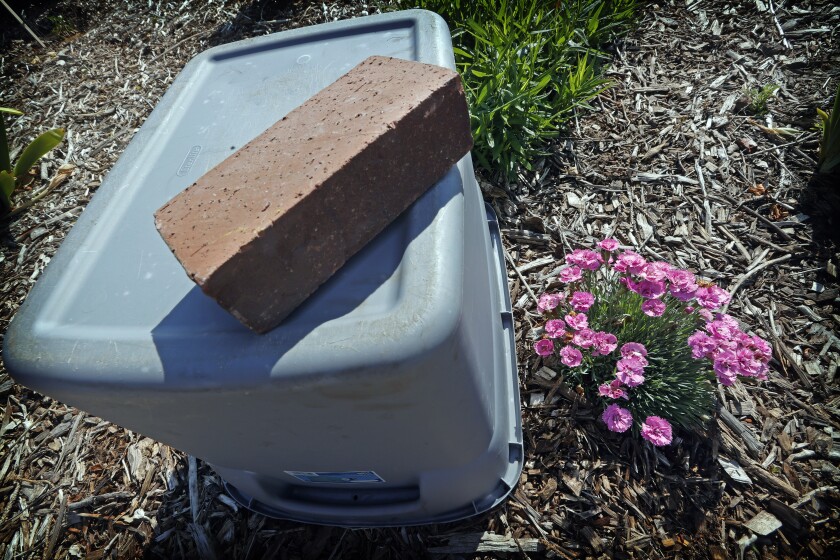FARGO — It was so windy last week across the Upper Midwest that even cows were blown over. It was an udder disaster.
Mother Nature apparently heard us complaining about the late, chilly, wet spring, so she compensated by ushering in summer with hot, dry winds.
ADVERTISEMENT
Hot, windy weather is the opposite of what makes our yards and gardens flourish. Some garden plants do enjoy heat, minus the wind, such as watermelon, muskmelon, cucumbers, squash, pumpkin, tomato and pepper.
Most plants in our area, though, are adapted to the generally cooler summers of the Northern states. Sure, we get a few hot days most summers, but we traditionally don’t experience the extended heat and humidity of the Deep South.
Plants that grow best in our region enjoy bright sunny days, moderate temperatures and a nighttime cooldown. Staples such as peonies, iris, geraniums and even rhubarb suffer and begin to decline in extended heat.
When we experience blast furnace heat levels, our cool-loving plants quickly regress to survival mode. Coupled with wind, flowers quickly shatter and plants themselves can break apart. Vegetable plants can whip and twist in the wind until stems are damaged beyond recovery. One hot, windy day can doom flowers and gardens.
Newly planted trees and shrubs easily develop scorched leaves, as hot winds desiccate foliage faster than the young root system can pump water upward. Trees without established roots can tip in strong wind.
It might sound dire, but there are ways to mitigate damage from heat and wind. Measures taken on a severely hot, windy day can save plant lives.
Preventing wind damage

ADVERTISEMENT
- Tall perennials, such as delphinium, giant fleece flower and lilies, might require staking, either throughout the season or temporarily on days of extreme wind.
- Small, newly planted perennials or shrubs can be protected on windy, scorching days by temporarily covering with a bucket or tote weighted with a brick or rock. Prop up the base to allow a little air circulation inside.
- Newly planted trees might require staking for the first one or two seasons. The support mechanism should allow for some movement of the trunk, which builds trunk strength.
- Damage to garden vegetables can be mitigated by using a hoe to mound soil around the base of plants to prevent stems from being whipped, twisted and damaged, which works well for cabbage, broccoli, squash, cucumber, melons, pumpkins, tomato and potato.
- Young vegetable transplants can be protected with open-ended cans or jugs placed around the plants, and removed as plants grow. Past generations used a wooden shake or shingle placed on the windward side of each plant.
- Vegetable and flower plants can be given temporary protection on gusty days with almost any object that provides a wind barrier.
- Move pots and planters to a sheltered spot until the wind subsides.
- Water trees, shrubs and all young and less-established plants in the morning of days forecast to have extreme wind.

Preventing heat damage
- When temperatures soar above 90 degrees Fahrenheit, many plants suffer heat stress.
- Move flower containers into the shade, if possible, on the hottest days.
- Water flower beds, vegetable gardens, containers and newly planted trees and shrubs the evening before extreme heat is predicted.
- Watering down wood and rock mulch, walkways and the vicinity around plants and containers during the heat of the day can provide cooling by evaporation. Sprinkling plants with water can cool them down, but wetting foliage can cause serious disease, and water droplets can magnify the sun’s heat, causing burnt spots.
- If plants wilt from heat but the soil is still wet, resist the urge to add more water, which can cause additional problems.
- Mulch flowers and vegetables with straw or lawn clippings that haven’t been treated with herbicides. Mulch keeps soils moist and cool.
- Rock mulch can collect and retain dangerous levels of heat. Spraying the mulch with water in midday can provide cooling by evaporation. If an entire landscape is mulched with rock, removing rocks from a 2- to 4-foot diameter circle around plants and replacing with shredded wood mulch can be a permanent solution.
Don Kinzler, a lifelong gardener, is the horticulturist with North Dakota State University Extension for Cass County. Readers can reach him at donald.kinzler@ndsu.edu.










